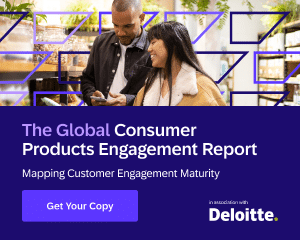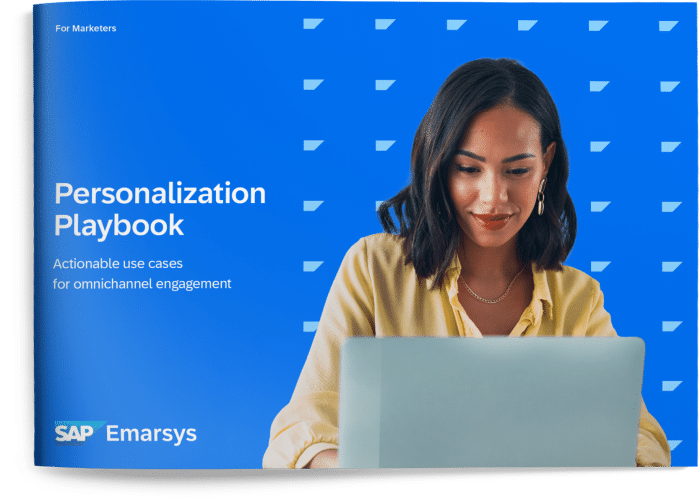For a bustling hub like Brisbane Airport, managing the expectations and needs of millions of travelers each year is no small feat. Ensuring a seamless journey, from parking to boarding, requires a sophisticated understanding of customer behavior at every stage of their experience. That’s where customer journey analytics steps in.
By analyzing every interaction across the traveler’s journey, Brisbane Airport has unlocked the ability to deliver hyper-personalized and meaningful engagements. Using advanced tools like SAP Emarsys, they turn data into actionable insights, creating experiences that delight travelers while driving business outcomes.
In this article, we’ll explore 4 ways Brisbane Airport leverages customer journey analytics to provide tailored solutions, foster loyalty, and continually improve their traveler-centric approach. Let’s dive in.
1. Transforming Insights into Actions with Customer Journey Analytics
For Brisbane Airport, transitioning from basic customer interactions to a fully personalized, data-driven strategy required a major shift in focus. Previously reliant on infrequent, one-size-fits-all communications, the marketing team now uses customer journey analytics to gain a deeper understanding of travelers’ behaviors and preferences. This transformation, powered by SAP Emarsys, allows Brisbane Airport to act on real-time insights and deliver relevant messaging tailored to each stage of the traveler’s journey.
One of the key enablers of this change has been the ability to consolidate and analyze data from various touchpoints.
By using SAP Emarsys’ customer data capabilities, Brisbane Airport captures insights such as booking behaviors, travel frequency, and even parking choices to create customer personas and predict future needs. These personas—ranging from business travelers to leisure travelers and Fly-In-Fly-Out (FIFO) workers—help the team segment audiences and design communications that resonate.
For example:
- Business travelers who book parking for shorter stays during weekdays receive messages emphasizing convenience and time-saving options, such as valet services.
- Leisure travelers parking for longer periods over school holidays are targeted with family-friendly offers and promotions for duty-free shopping.
- FIFO workers, whose schedules often follow rolling patterns, are engaged with recurring incentives tailored to their unique travel habits.
This level of personalization not only enhances the customer experience but also drives tangible business outcomes. By turning insights into targeted actions, Brisbane Airport ensures that each traveler feels valued and understood, fostering loyalty and increasing repeat bookings.
“We break our customer personas down by business, leisure, and FIFO… We’ve been able to use our data to say, give me contacts who have traveled from a Monday to a Thursday, parked for 1 to 3 days, and traveled more than eight times in the year.”
2. Enhancing the End-to-End Traveler Experience
Brisbane Airport’s use of customer journey analytics extends across the entire traveler lifecycle, from planning to post-travel. By mapping key stages of the journey—planning, booking, parking, and exploring the terminal—the team ensures a seamless and personalized experience at every touchpoint.
For instance, parking customers receive timely email reminders highlighting relevant offers, such as duty-free click-and-collect services. As travelers approach their departure date, SMS alerts provide last-minute updates or exclusive deals, ensuring that messaging is always relevant and actionable.
In-terminal, Brisbane Airport leverages Wi-Fi data to engage travelers who may not have pre-booked parking. Whether through coffee vouchers or retail discounts, these efforts encourage spending and deepen engagement, driving value for both customers and the airport’s retail partners.
Through these tailored interactions, Brisbane Airport demonstrates how customer journey analytics can transform touchpoints into opportunities, creating smoother journeys and driving measurable results.
“For someone booking parking at the international terminal, we send an initial email building awareness around BNE duty-free click-and-collect. As it gets closer to their departure, we send communications on what’s on offer at the terminal.”

3. Overcoming Challenges with Unified Data
A key hurdle for Brisbane Airport was breaking down data silos to gain a unified view of the customer. With various stakeholders involved—retailers, airlines, and internal teams—it was essential to connect disparate data sources to unlock actionable insights.
By leveraging SAP Emarsys’ omnichannel engagement platform, Brisbane Airport seamlessly integrates data from parking bookings, Wi-Fi usage, and online browsing behaviors. This unified approach enables the team to predict customer needs, tailor messaging, and deliver timely communications across multiple channels, including email, SMS, and web.
For example, rather than relying on assumptions, Brisbane Airport uses actual behavioral data to identify patterns, such as frequent travelers or seasonal leisure customers. This precise targeting reduces inefficiencies, ensuring marketing efforts are both effective and cost-efficient.
The result? Brisbane Airport has leveraged a clear strategy and strong data governance to turn these challenges into opportunities, proving that unified data is the foundation for creating meaningful customer experiences.
“My number one piece of advice is to get your data team on board before you even start. We work closely with them twice weekly to ensure we’re on the same page and on this journey together.”
4. Driving Engagement Through Multichannel Strategies
Brisbane Airport has mastered the art of connecting with travelers at the right time, using the channels they prefer. By blending email, SMS, and web channel messaging, they create a seamless and engaging experience throughout the customer journey:
- Email: For early trip planning, emails introduce travelers to parking options and the convenience of duty-free click-and-collect.
- SMS: As departure dates approach, SMS delivers timely reminders, like picking up last-minute duty-free items or taking advantage of in-terminal offers.
- Web: On the website, personalized web messaging reinforces these communications, ensuring consistency across channels.
Wi-Fi data adds another dimension. When travelers connect at the terminal, they receive instant offers like coffee vouchers or dining discounts, giving them a reason to explore and enjoy the airport’s amenities. These small, timely nudges not only improve the travel experience but also support Brisbane Airport’s retail partners.
With this cohesive multichannel approach, Brisbane Airport ensures every interaction is meaningful and relevant, building stronger connections with travelers and driving results that matter.
“We know the moment someone enters the car park or books into it online, and we send them an SMS with a coffee voucher or retail offer because at that point, email might be too late.”
Actionable Takeaways for Businesses
Implementing customer journey analytics can feel overwhelming, but starting with clear, actionable steps ensures a smooth and impactful transition. Here’s how to get started:
- Unify your data: Break down silos by integrating data from all touchpoints into a unified customer profile. This makes it easier to analyze behaviors and deliver personalized experiences.
- Focus on behavioral insights: Use customer journey analytics to identify patterns and predict needs. For example, track frequent purchase behaviors or seasonal trends to tailor your messaging.
- Embrace multichannel execution: Meet customers where they are by coordinating campaigns across email, SMS, web, and more. Ensure each channel complements the others for a seamless experience.
The results speak for themselves: stronger customer loyalty, increased average order values, and more meaningful connections with your audience. By adopting these strategies, businesses can turn customer data into real-world outcomes, driving both engagement and revenue.







